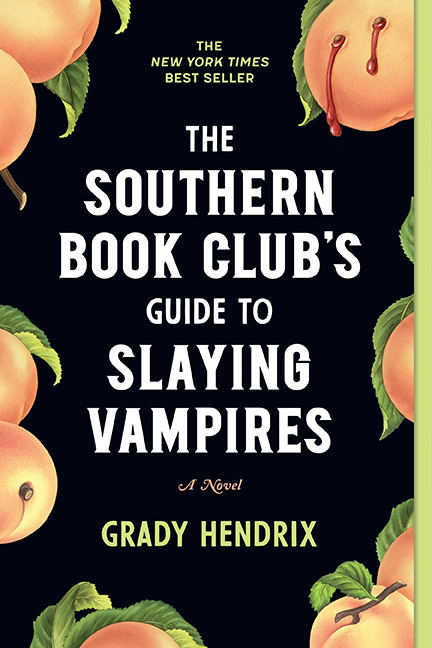Our Blog
Worst-Case Wednesday: The College Roommate From Hell
We’re halfway through Summer. And for those of you prepping to head off to college… well, take it from me, you might need this advice.
The first day of school may have been a little scary when you were younger, but you can handle anything now, right? Bad news: if you just graduated from high school, you’re not out of the woods yet. Your freshman year in college is one of the biggest transitions of all, and one of the first challenges you’ll be facing is getting along with your roommate.
Good thing The Worst Case Scenario Survival Handbook: College has some hints, tips, and tricks in case it’s not working out between you two.
Posted by Jessica Lopez
Four Summer Movies Based On Bestselling Books
Photo by Nadia Hatoum
Summers at the movies evoke images of action flicks with lots of explosions. But bookworms like me won’t feel left out as they retreat to the cool air conditioning of the theater. Here are four summer blockbusters you won’t want to miss. And I won’t even make you read the book first.
Abraham Lincoln: Vampire Hunter (Now Playing) Seth Grahame-Smith adapted his novel of the same name for this movie that imagines our 16th President’s secret vampire hunter identity. The majority of the film takes place in the Civil War era, where another war wages – this one against the race of vampires.
Both the film and the novel seek to explain the early death of William Wallace Lincoln as an attack from the undead. The film’s star Benjamin Walker seems to be making a career of portraying presidents. Walker played Andrew Jackson in the Broadway musical “Bloody Bloody Andrew Jackson” last season.
What to Expect When You’re Expecting (Now Playing) Based on the popular pregnancy book of the same name, What to Expect When You’re Expecting follows five couples at various stages in their pregnancies. This comedy offers a lighthearted take on the joys and pains of pregnancy, using acquaintances and associations to weave together the various story lines of these five couples.
Screenwriter Heather Hach is no stranger to adaptations. Hach wrote the script for the 2003 remake of Freaky Friday and the book for the Broadway musical “Legally Blonde.”
Posted by Danielle Mohlman
Some Great Podcasts With a Literary Flavor
There are hundreds of podcasts out in the ether these days, with a range of audio quality from one guy in a basement with a computer microphone to company-sponsored full-cast performances. Finding programs to listen to while you’re in the car, going for a jog, or just hanging out at home is largely about trial and error, starting with a topic that interests you and downloading the usually free shows until you find the voices that suit your tastes.
One of the great things about the growth of podcasts as a means of expression is that modern technology can connect people from across the country for a chat, and the content is one hundred percent up to the creators.
Here we’ve compiled a list of some great podcasts that tackle books, authors, publishing, and everything in between.
Posted by Megan Christopher
Pineapple Chili Pork BBQ Skewers
When the heat is on, what could be better than firing up the grill and making these perfect and pretty Pineapple Chili Pork BBQ Skewers?
There’s nothing like an all-time char-grilled favorite. You can make the marinade ahead, soak the pork pieces and let the sweet, spicy, tangy, succulent flavors set. Then skewer and let the grill do the work for you. Don’t forget to chill the drinks, call for company to join you, then just laze around and indulge in these BBQ bits. Stay cool and serve these with cold salads and chilled desserts.
Posted by Elizabeth Ann Quirino
National Ice Cream Month: Spiked Ice Cream Cake
A classic kids birthday favorite turned indulgent adult treat, this Spiked Ice Cream Cake will be the star of your next get-together.
Every part of this cake, from the ice cream filling to the cake itself to the frosting, is infused with booze (in this case, bourbon). Plus, changing up the flavor of the cake, ice cream, or both allows you to create new and exciting cakes all summer long!
Spiked Ice Cream Cake
From Booze Cakes by Krystina Castella and Terry Lee Stone
Here’s an adult version of everyone’s favorite birthday cake. This recipe makes a chocolatey bourbon-laced cake that’s filled with bourbon-spiked ice cream and topped with still more bourbon-infused frosting. You can experiment with any imaginable combination of cake, alcohol, ice cream, and frosting.
Spiked Ice Cream
– 4 cups (2 pints) cherry vanilla ice cream, partially melted
– ¼ to ½ cup bourbon
– A few drops food coloring, if desired
Bourbon Devil’s Food Cake
– ½ cup (1 stick) unsalted butter
– 1 ¾ cups sugar
– 2 eggs
– ½ cup + 1 tablespoon unsweetened cocoa powder
– 1 ½ cups cake flour
– ¼ teaspoon baking powder
– 1 teaspoon baking soda
– ½ teaspoon salt
– ½ cup milk
– ¼ cup espresso or strong coffee
– ¼ cup bourbon
Creamy Vanilla Bourbon Frosting
– 1 ½ cups heavy cream
– 2 tablespoons sugar
– ½ teaspoon vanilla extract
– 2 tablespoons bourbon
PREPARE:
– Preheat oven to 350°F. Grease a 9- or 10-inch tube pan.
– For the spiked ice cream: Stir together ice cream, bourbon, and food coloring; freeze overnight.
MAKE:
– Thaw spiked ice cream for 20 minutes or microwave on low in 60-second intervals until soft.
– For the cake: In a mixing bowl, cream butter and sugar 3 to 5 minutes, or until light and fluffy. Beat in eggs.
– Combine cocoa, flour, baking powder, baking soda, and salt; set aside. Combine milk, espresso, and bourbon. Beat the flour and bourbon mixtures into the butter mixture in three alternating additions. Pour the batter into the cake pan. Bake for 35 minutes, or until a knife inserted in the center comes out clean. Let cool completely.
– For the frosting: In a mixing bowl, beat cream and sugar until light and fluffy. Stir in vanilla and bourbon.
FINISH:
– Slice off the top fourth of the cake horizontally and set aside. Place the remaining cake on a freezer-safe plate. With a thin serrated knife, gently score around the inner edge, about ¾ inch from the edge and no deeper than 1 inch from the bottom of the cake. Repeat with outer edge. With a serrated spoon, carefully scoop out the cake between the scores to create a tunnel. Freeze 1 hour. (Go for it! Eat the scooped-out cake while you’re waiting.)
– Remove the cake from the freezer. Fill the center tunnel with softened bourbon-spiked ice cream. Put the top layer back on, wrap tightly in plastic wrap, and freeze at least 4 hours. Frost, and then freeze 30 minutes before serving.
Flavor variations are endless! Try these combinations or mix and match to suit your taste:
Bourbon Chocolate Caramel-Vanilla Ice Cream Cake — For the ice cream: Replace cherry vanilla with caramel vanilla swirl.
Rum Mocha Ice Cream Cake – For the cake and ice cream: Prepare a chocolate cake in a tube pan. Add ½ cup rum to the batter before baking. Fill with coffee ice cream that has been spiked with rum. For the frosting: Substitute rum for the bourbon and chocolate extract for the vanilla.
Vodka Mint Chocolate Ice Cream Cake – For the cake: Prepare a chocolate cake in a tube pan. Add ½ cup vodka to the batter before baking. Fill with mint chocolate chip ice cream that has been spiked with vodka. For the frosting: Substitute rum for the bourbon and mint extract for the vanilla.
—
Homemade Quirk: Follow the community on Twitter, like it on Facebook!
Posted by Caroline Mills
Six Months to Walk it Off
So. The world is going to end in six months due to an asteroid hurling itself towards us. What to do, what to do.
Posted by David Goodman






